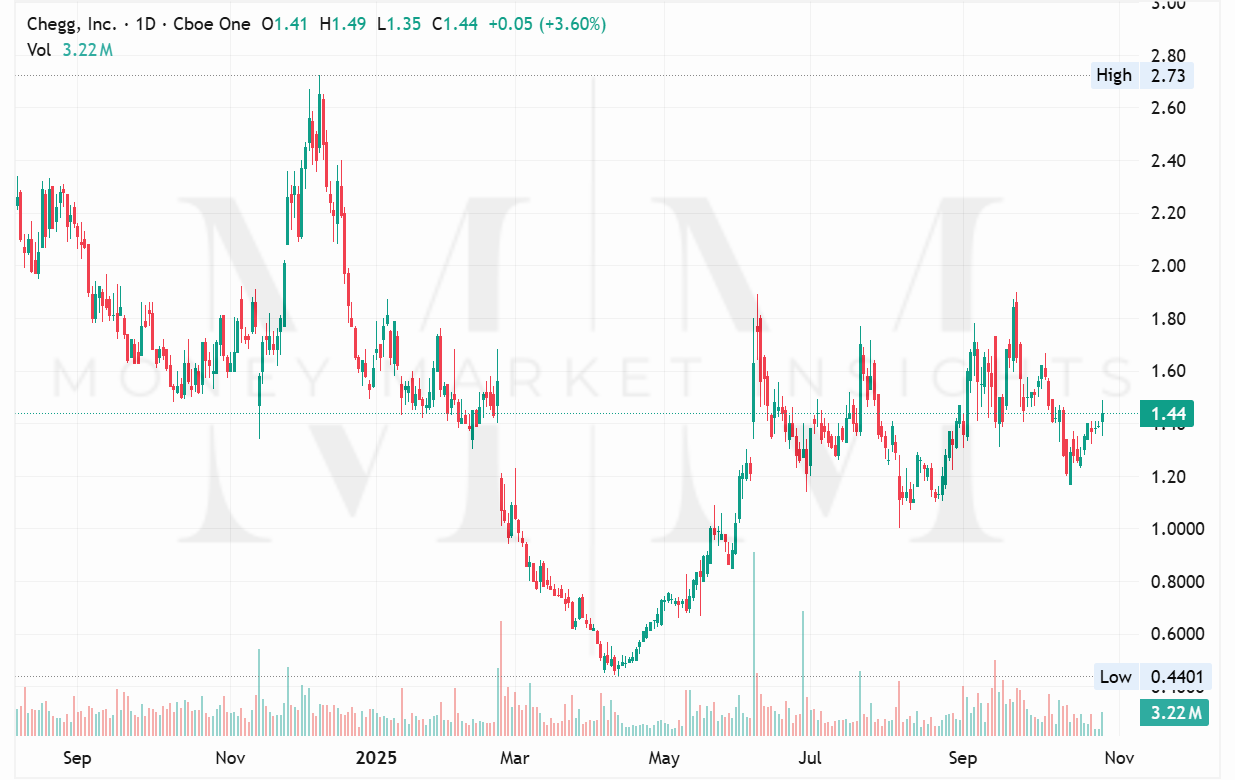Chegg’s AI Wake-Up Call for Investors
Chegg’s AI Reality Check: Why Its Business Model Is Breaking and What It Means for Investors.
The educational-technology company Chegg has quietly become a case study in how fast disruption can hit a business that once seemed resilient. As students gravitate toward AI-based tools and search engine summaries, Chegg is facing a steep decline in user engagement, revenue, and relevance. That shift has triggered major restructuring and a complete rethink of the business model. For investor particularly those trading or holding CHGG 0.00%↑ this is a moment to question assumptions, reassess value, and decide whether the risk is worth it.
What’s Going On Inside Chegg
Sharp User/Revenue Declines: Chegg’s most recent disclosures show deeply negative trends. For example:
Its Q1 2025 revenue dropped ~30% year-over-year to about $121.4 million, with subscription revenue down ~30%.
Its paid subscriber base plunged ~31% year-on-year to roughly 3.2 million users.
Analysts are downgrading the stock, calling out the structural headwinds.
AI Disruption & Traffic Loss: Crucially, Chegg is pointing the finger at generative-AI and search platform changes:
Students increasingly bypass Chegg’s homework-help model in favour of AI chatbots or “AI overview” features built into search results by Google.
The company underscored that its web traffic has been hurt as Google summaries divert student visits.
Cost-Cutting & Restructuring: In response, Chegg is taking aggressive action:
Announced plans to eliminate about 45% of its workforce (roughly 388 jobs) in an October 2025 restructuring.
Earlier in May the company cut ~22% of employees (≈248) in a previous round.
The restructuring is expected to cost ~$15-19 million in Q1 2026 and ~$12-16 million by Q4 2026.
Meanwhile it concluded a strategic review and opted to remain independent (rather than sell) despite the pressure.
What This Means for the Business
High Risk of Obsolescence
The core challenge is clear: the homework-help and textbook-rental model that Chegg built its brand on is under existential threat. With AI chatbots offering free or inexpensive alternatives and Google search delivering more direct answers, the value proposition is eroding fast. That means Chegg must pivot and do so quickly or risk becoming a legacy asset.
Pivot to New Revenue Streams
Chegg has to reposition. Key directions might include:
AI-powered study tools / personalized learning (which it has signaled). (Chegg Investor Relations)
Language learning, skills training, certification services: areas less easily disrupted by simple AI responses.
Licensing of platforms or B2B partnerships rather than purely consumer subscriptions.
But execution here will matter enormously. Transitioning and monetizing will take time, and meanwhile the legacy decline continues.
Margin Pressure & Free Cash Flow Drain
The business contraction means fewer subscribers and likely lower margins. Restructuring costs are upfront. Therefore:
Investors must watch free cash flow trends, not just earnings.
If the decline continues, capital may be pulled from the growth initiatives, hampering the pivot.
The risk of a “value trap” is elevated: you may buy the depressed valuation only to see the decline continue.
What This Means for Investors
Opportunity vs. Value Trap
Potential opportunity: The stock’s heavy decline means if Chegg executes a successful pivot, there’s upside.
Major caveat: If the pivot fails or takes too long, the losses could deepen. Many analysts rate it a “Reduce”.
Time horizon matters: This is not a quick trade. If you believe in the pivot you need patience and conviction.
Key Metrics to Monitor
Subscriber count trends & churn rate: Are declines slowing or still accelerating?
Traffic and engagement metrics: Are AI alternatives cannibalizing usage?
Free cash flow and cost restructuring execution: Are promised savings materializing?
New revenue lines: Are AI-powered tools or B2B revenue picking up?
Guidance and investor tone: Is management acknowledging the pivot timeline realistically?
Entry & Risk Strategy
Entry: Consider entering only if you see early signs of stabilization (e.g., subscriber decline bottoming) plus credible pivot signals.
Risk control: Size modestly, set stop-loss or hedge via options, because the downside remains material.
Alternative strategy: Use it as a “watch” position until clearer evidence emerges.
Chegg stands at a crossroads. The disruption wrought by AI and changing student behavior has put its legacy model on shaky ground. Whether it will successfully morph into a next-generation education platform remains an open question and that uncertainty is baked into the valuation today.
For investors: this is a high-risk, high-transition story. If you believe in Chegg’s ability to pivot and execute, there’s potential upside. But if you view the business decline as unstoppable, you may be looking at a value trap.
*Disclaimer: Not Financial Advice. Investors should conduct thorough research and seek professional advice before making any investment decisions.




